How To Draw Long Flowing Hair
Hair is very of import for our characters, lending a personality of its own, and so cartoon hair exactly as we imagine it can be a real challenge.
But in that location are many dissimilar approaches we tin accept! For me, the most important rule is to understand what I am drawing, then that I don't become lost halfway through.
ane. Construction and volume
Kickoff, we must define the areas of our graphic symbol's hair. Marking a reference point or a road which divides the pilus can aid u.s.. For instance, at the hair departing (1). From in that location, information technology becomes easier to see the direction that each section volition take (2).
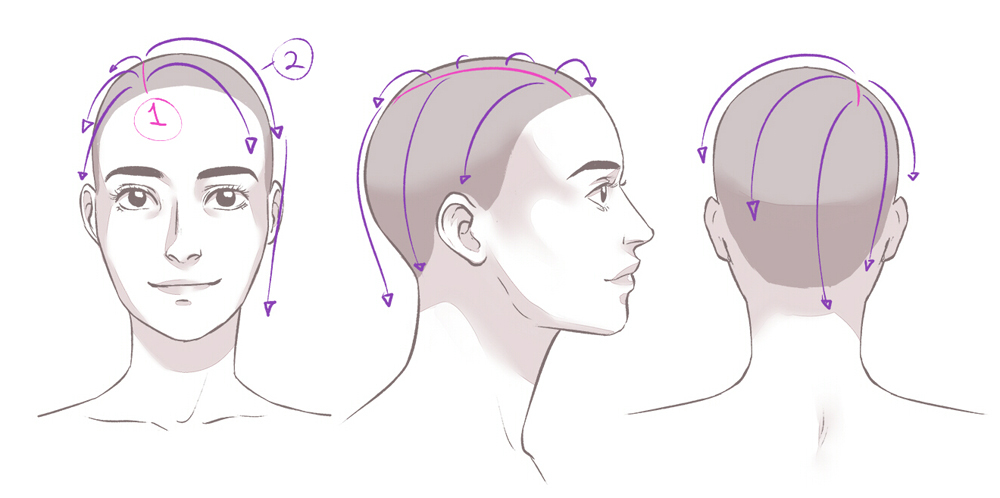
As my drawing advances, I ponder some possibilities. This character volition have straight hair, cut just over the shoulders. I retrieve no bangs would exist improve, but I want some hair to encompass one center, and the tips of the hair to curl inward.
I commencement to describe these lines. I might alter my mind subsequently on, but this phase allows me to encounter more conspicuously.
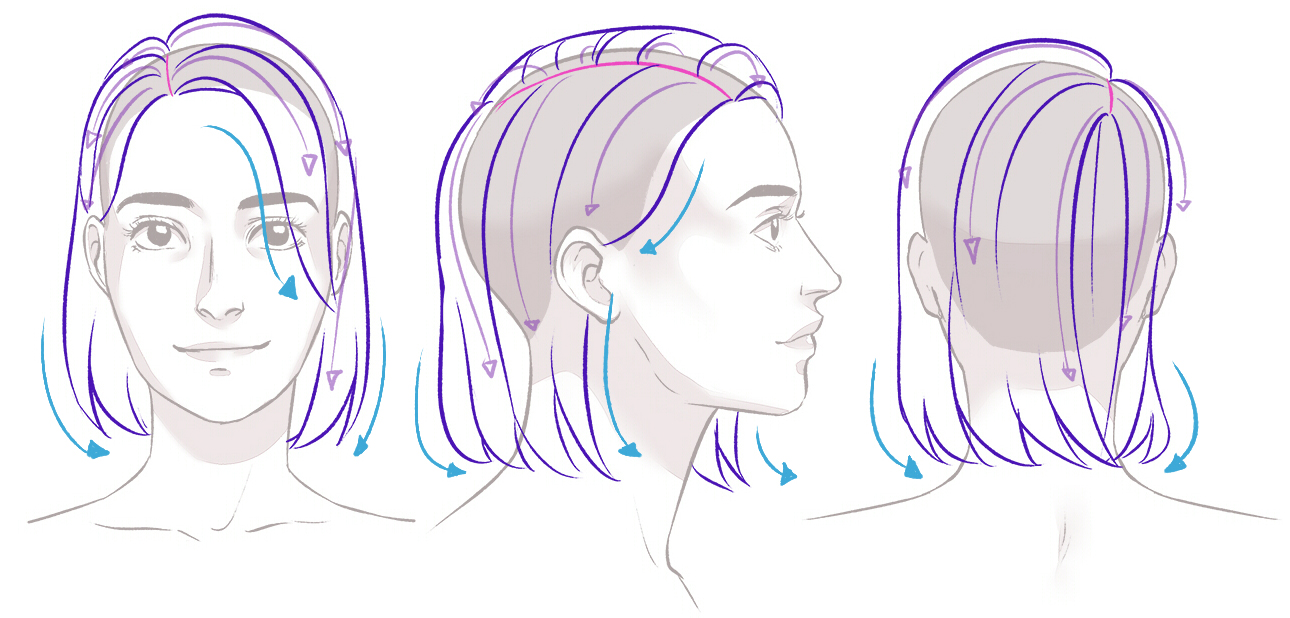
The caput is a sphere. If we don't accept that into account, the drawing could first to flatten. This is a adequately common error. Let's accept a expect using a mesh to demonstrate:
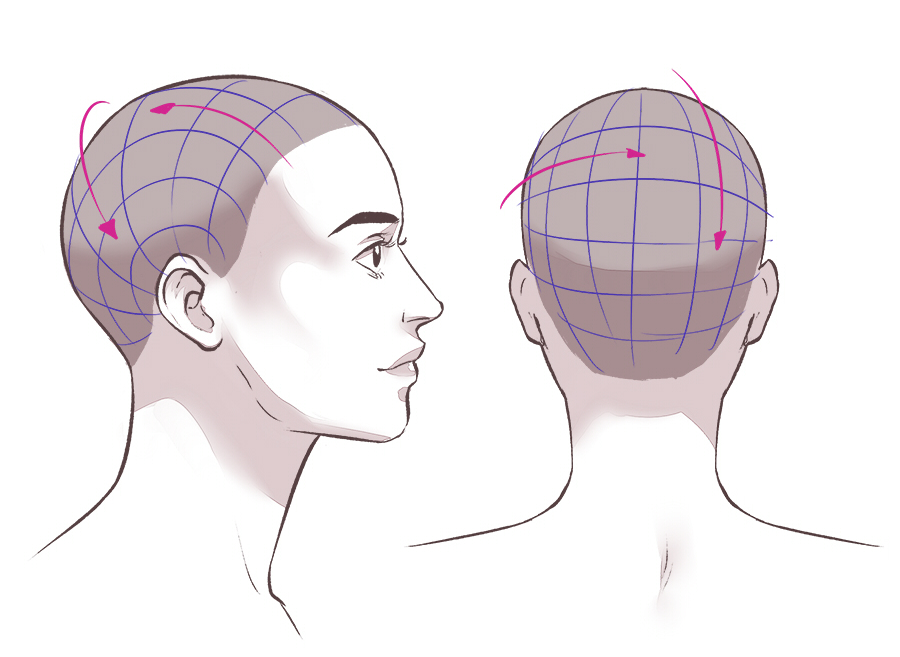
Each hair comes from a specific indicate and grows in a different direction. Even when the hair is very long, the gravitational force eventually brings information technology down.

Hair locks must somehow wrap the head following the curves of its surface. Check the divergence betwixt these 2 images. Both circles have a layer around them, but A looks more like a apartment shape, whereas B looks to exist more spherical.
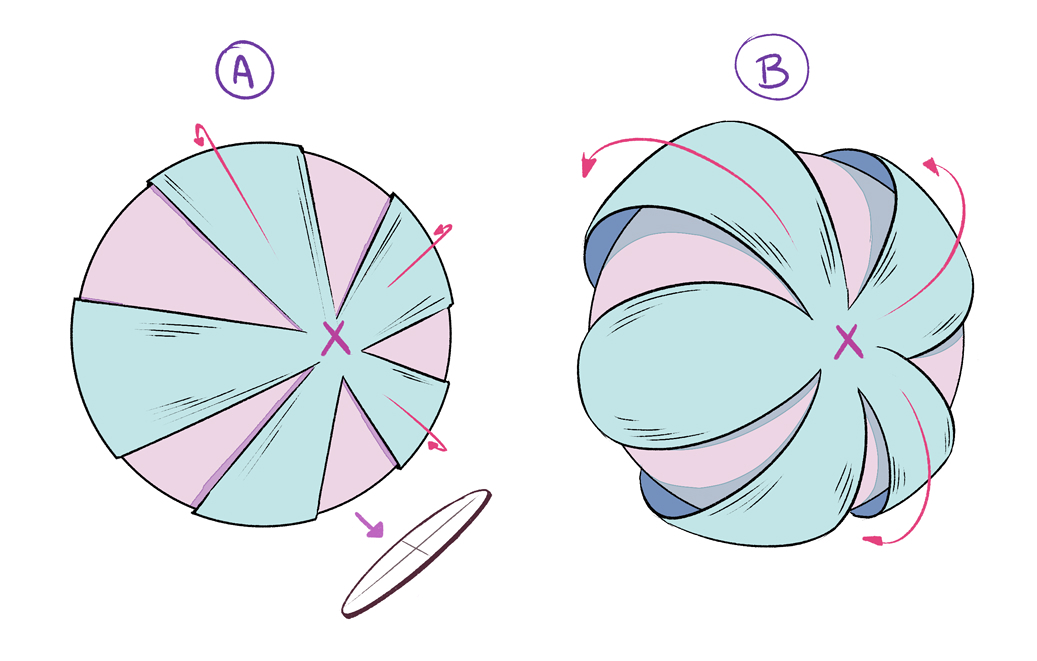
Hair does not glue itself to the head. Let's keep in listen that there is always infinite between strands and over layers of hair, which builds up to create book.
• The green surface area (1) indicates the gap between the head and the border of the hair.
• On the back of the head (2) there are several layers of hair, but since it's straight hair, the edges are almost unaffected, which allows a very subtle falling around the cervix.
• The volume varies depending on the amount of pilus on each side of the head (3).
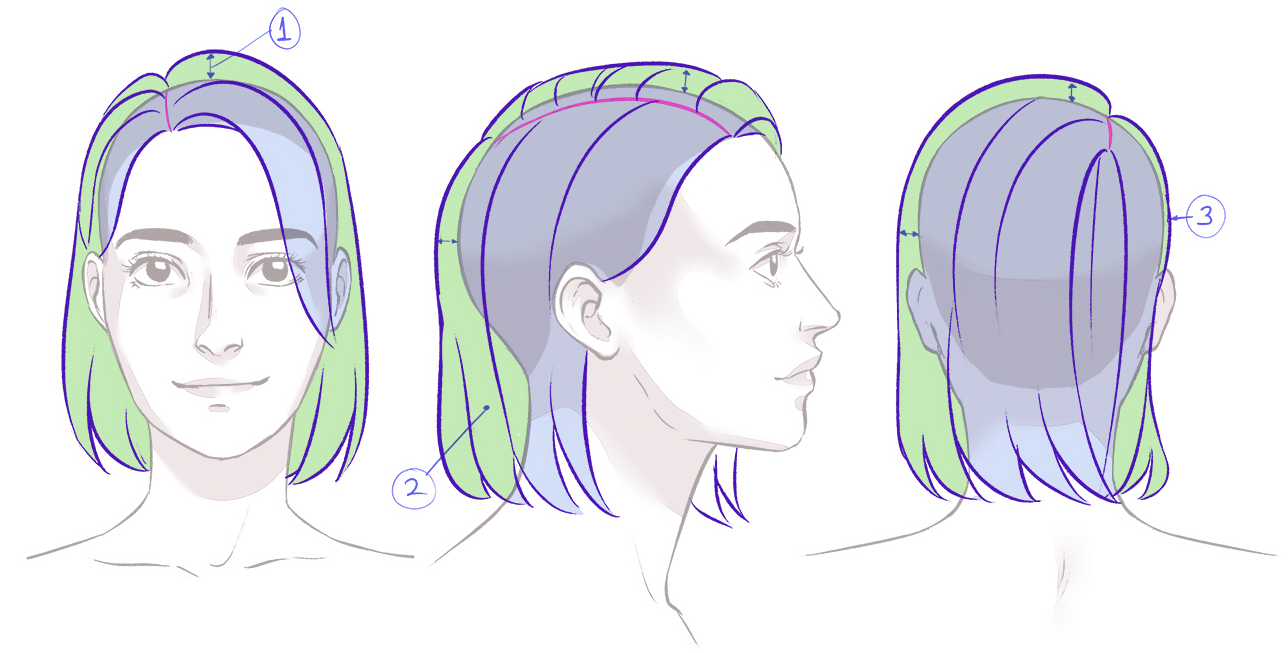
Many artists choose to simplify the hair using basic shapes, or anything else that helps them define the volume, the angles, and to easily arroyo values. Then they add details to the surface.
Task: I always recommend learning using real-globe references. Take some photos of hair styles and identify where the locks are coming from and where they are going. You can also draw their edges.
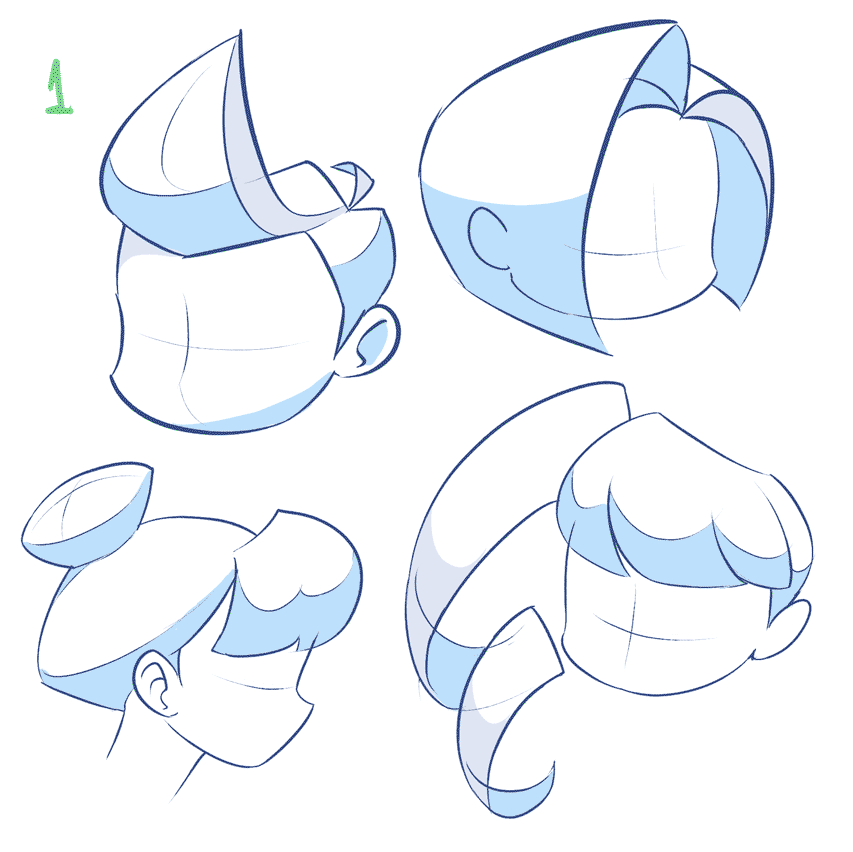
▲Animated GIF
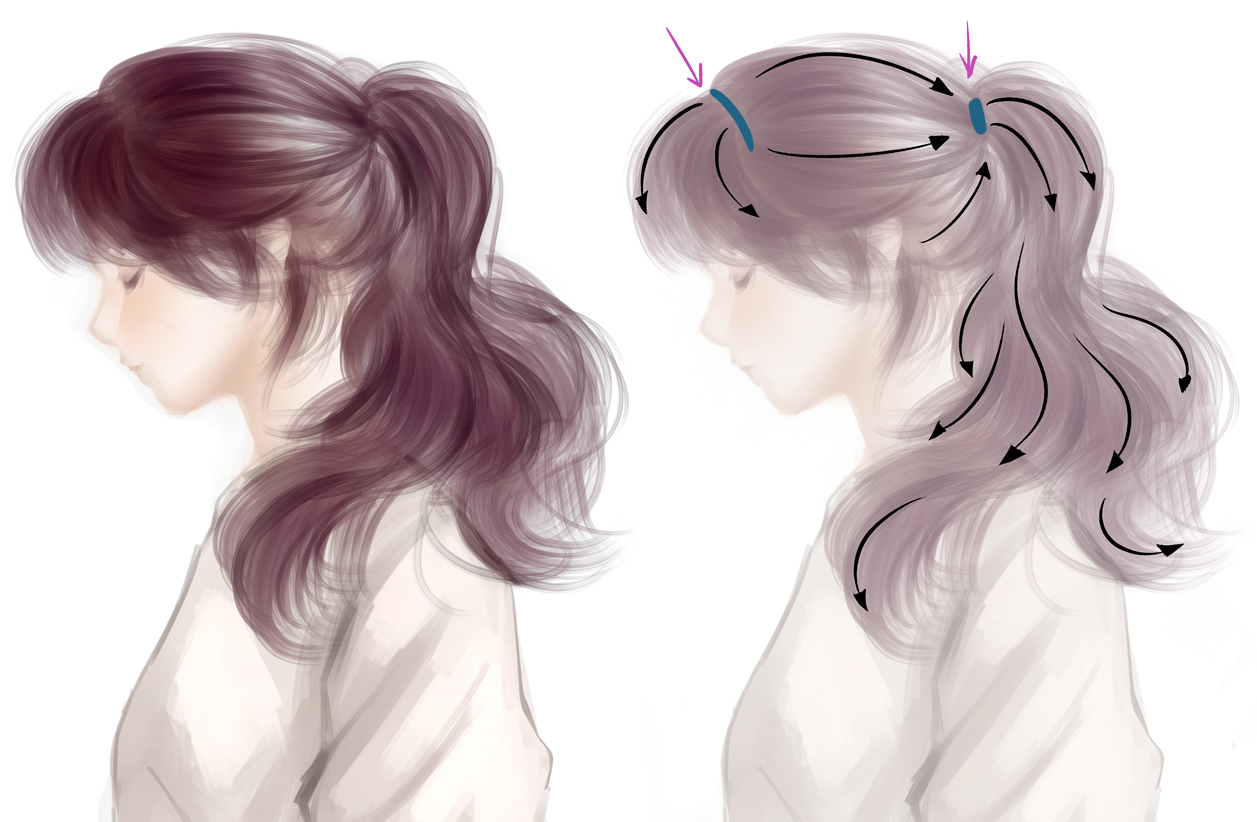
two. Shape:
Some cartoon styles demand more endeavour in the detailing stage than others, only it is always necessary to take into account the standard characteristics of pilus. Let's await at it this manner:
The overall pilus is a set of many locks > locks are a prepare of strands
• Pilus does not form a compacted shape, nor a consistent one. It is very light, so when the character moves, the current of air, the humidity, or anything that surrounds it can affect its silhouette.
Let'southward see some examples, step by step:
Direct hair:
• My first step was to describe the edges of the primary lock (the 1 which will be the base of our drawing), following the direction in a S shape. And then I filled it in to create its silhouette.
• The lilliputian strands on Pace 3 follow a very like direction, merely slightly more pronounced, enough to add together dynamism to the shape.
Finally, I added some strands which movement in completely different directions than the original one, to balance the composition and arrive more attractive.
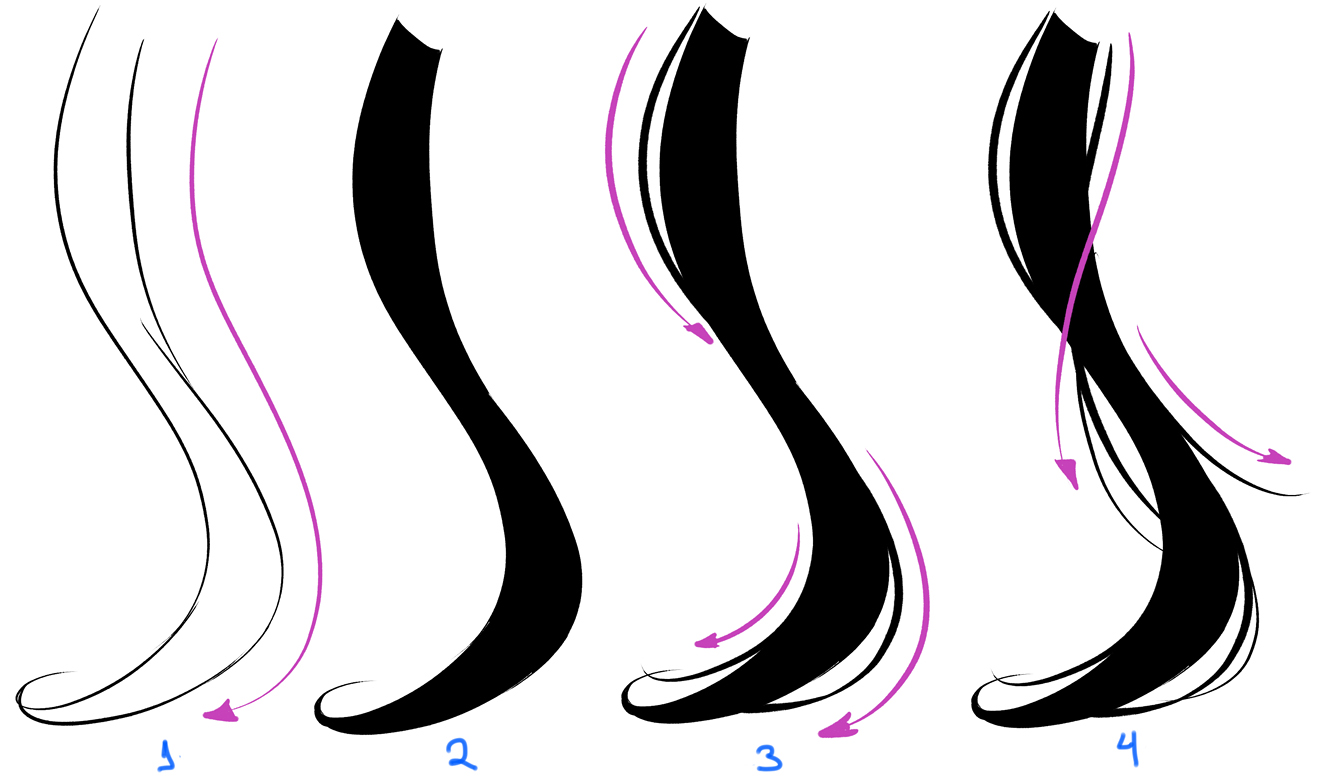
Curly pilus:
• The lock curls itself around in a cylindrical shape. Endeavour non to make this shape completely directly, otherwise the lock will end up looking like a jump!
• Then I simplify, first drawing a ribbon. Encounter how it becomes thinner equally it approaches the tip. The 3rd step is to detail the external and internal sides (A).
• I added some texture, following the direction of the curves. I also put in some irregularities around the edges to match the surface (B).
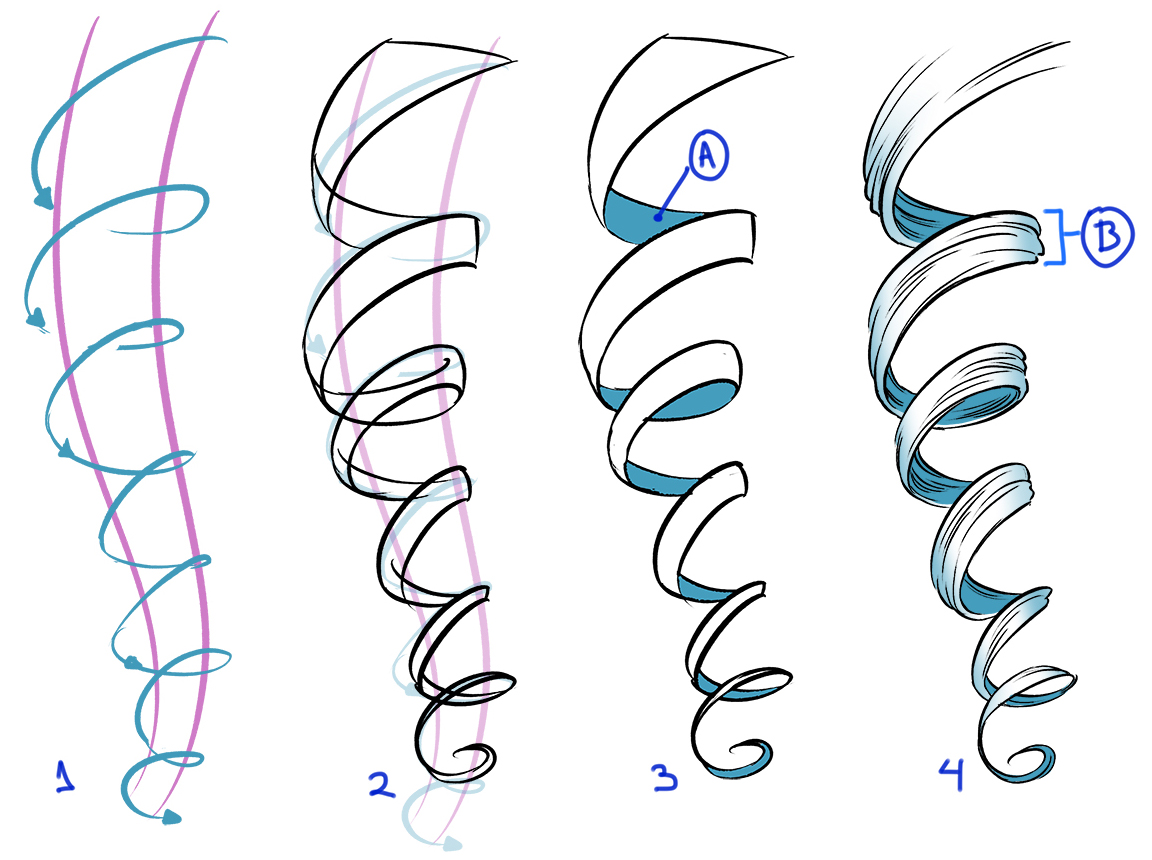
We can use this method to create more interesting and circuitous silhouettes:
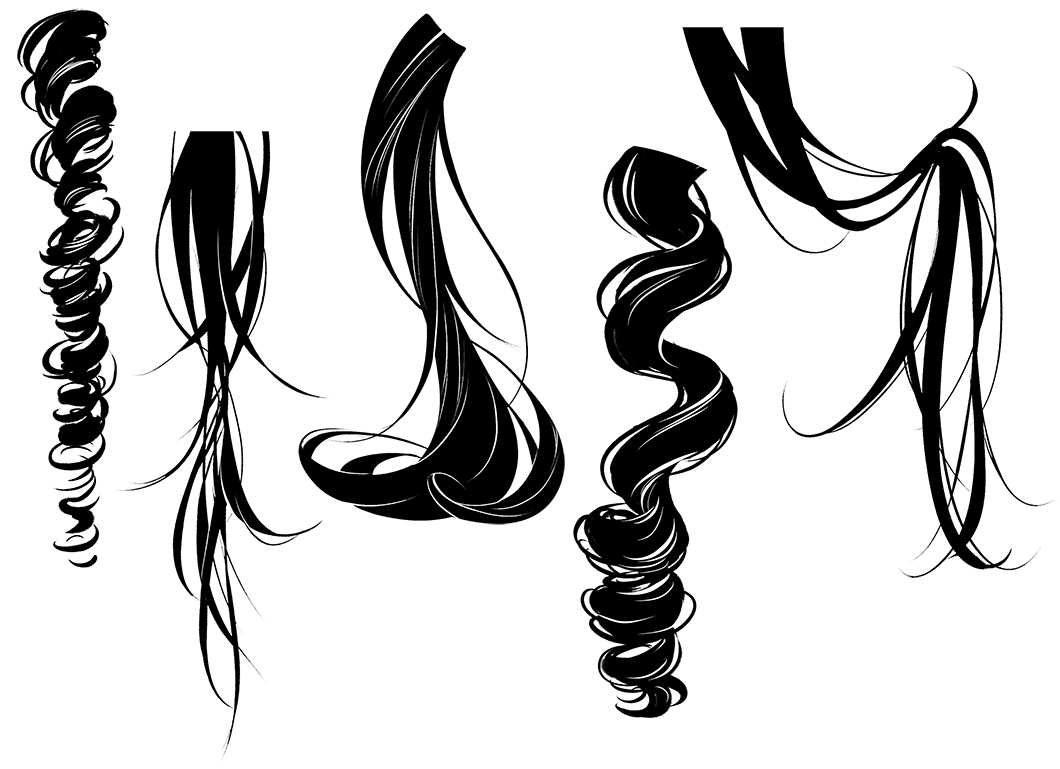
I followed all these criteria to brush upward my character and so I added the necessary amount of particular while keeping information technology simple.
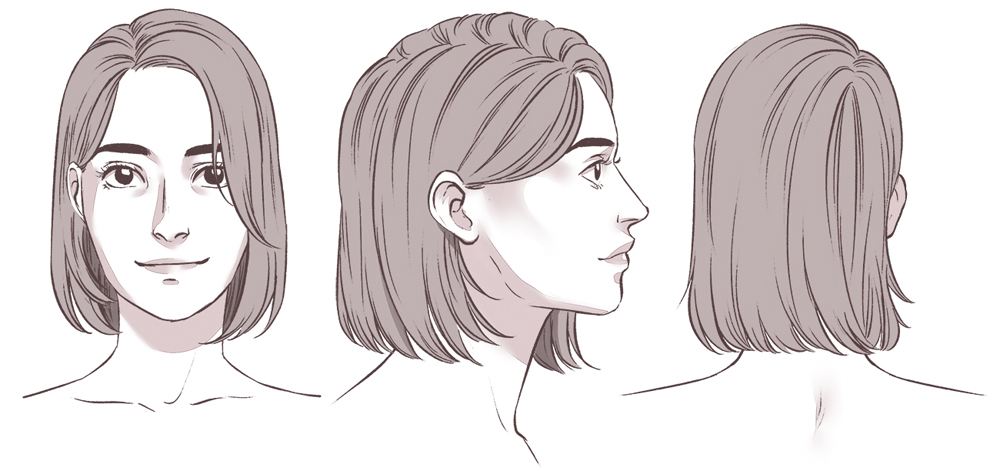
3. Adding values:
I am going to use the value calibration to ascertain details and give a 3D issue to the shapes.
The below image is a hairstyle consisting of irregular layers and overlapping locks. If we but had the silhouette, nosotros wouldn't notice all these details, thus I need to contrast the different sections in order to highlight these shapes.
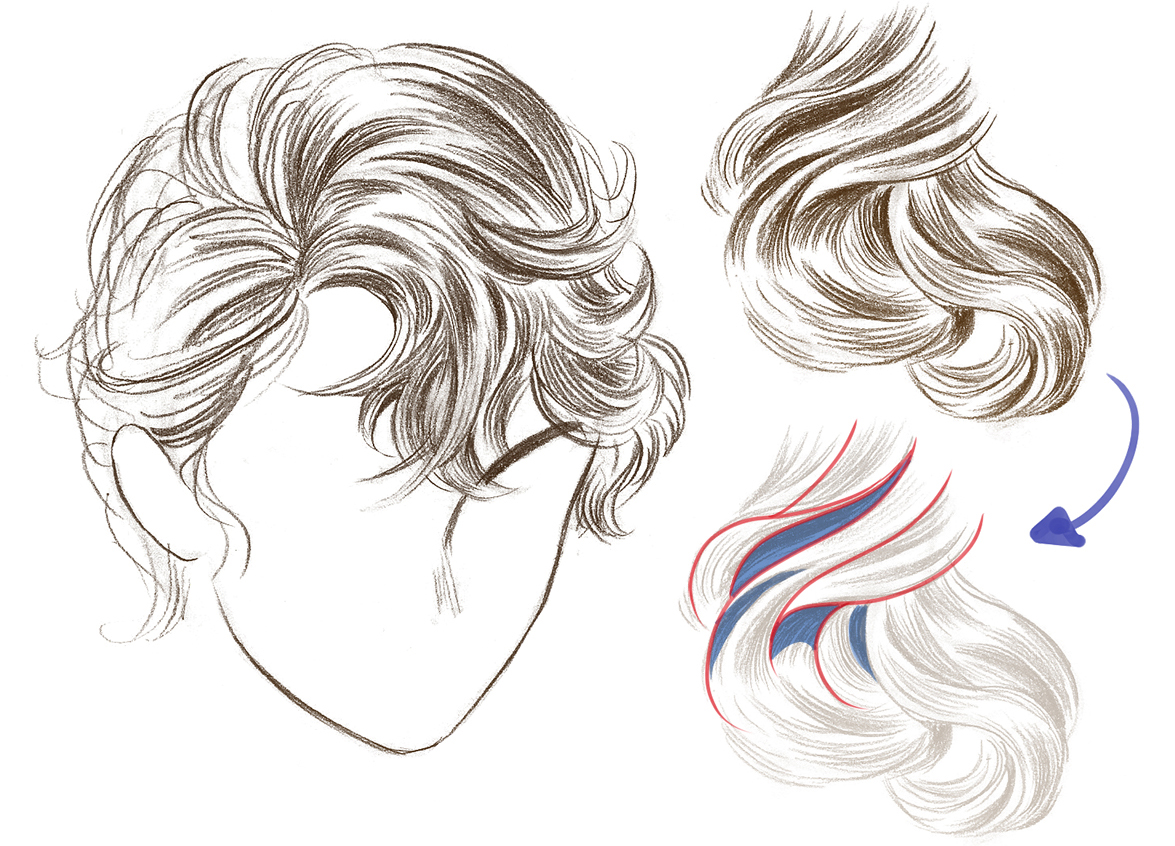
This is the pace-past-step procedure which will assistance us understand improve:
• I define the edges (1). In step 2, the mid-tones can be seen in the corner; the strokes follow a single direction to maintain the harmony of the shape, and the illuminated areas are left blank.
• In step 3, nosotros apply darker shades to darken and deepen some areas, for example, on the overlapping layers equally indicated by the arrows. I continue this way until the drawing is finished.
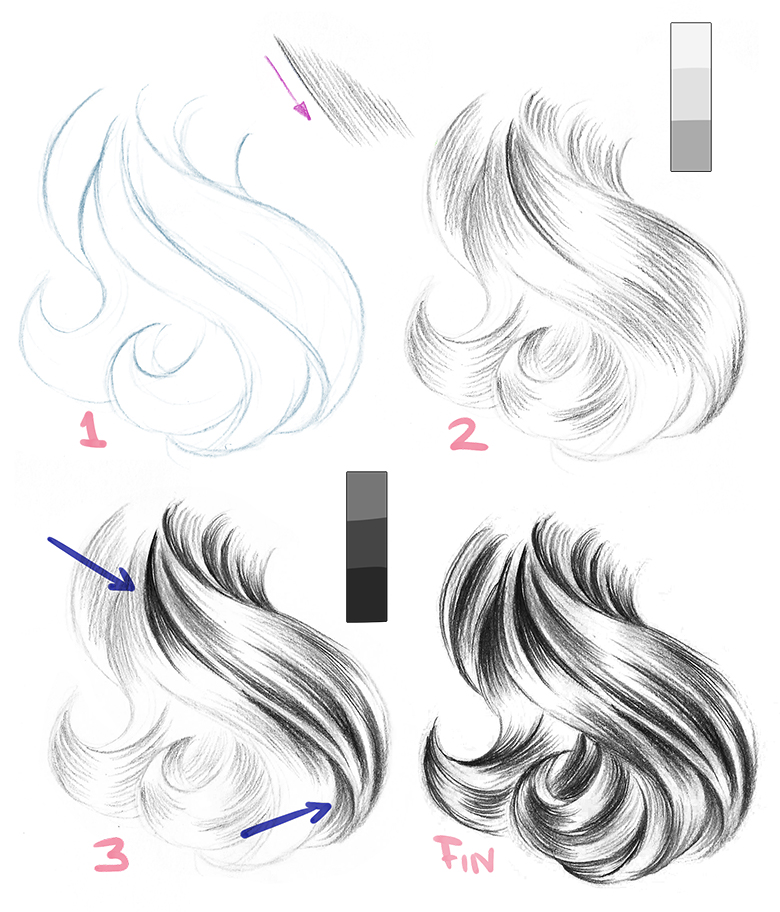
Information technology is not a problem if we are merely guided by our intuition when drawing shadows and lights. "Lighting" is an extensive and super interesting topic, and I am afraid that what I explicate hither is not enough to cover information technology! I'd recommend researching and practicing as much as possible.
Hair types and textures:
Textures make unique sensations and enrich our illustrations. Information technology may be overwhelming to think most hair textures, simply instead of working exclusively with lines, we must not decline other tools that can make tasks easier likewise as creating incredible effects, both in digital and traditional art spaces. It is always good to experiment to develop methods that highlight the qualities of our way!
I don't take a unique respond to which tool to use in each example, simply here is a inkling: imagine the feeling of each blazon of pilus!
Short, almost shaved hair feels like a carpet —I've always thought so! And when I describe it, I like to give information technology a prickly, pointy, rough appearance.
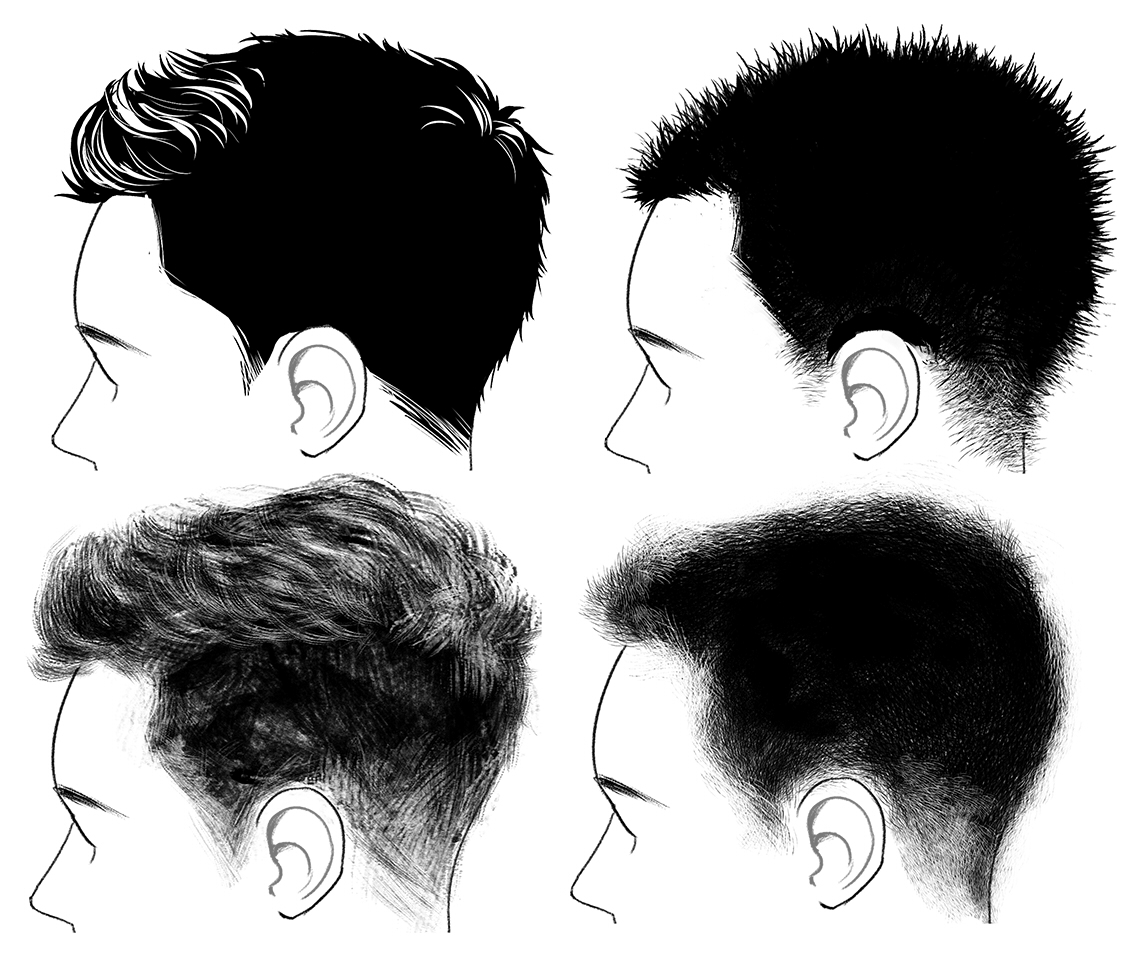
For wavy hair, I recall nigh the sea waves, curves finding one another. There is life, energy, and motion.
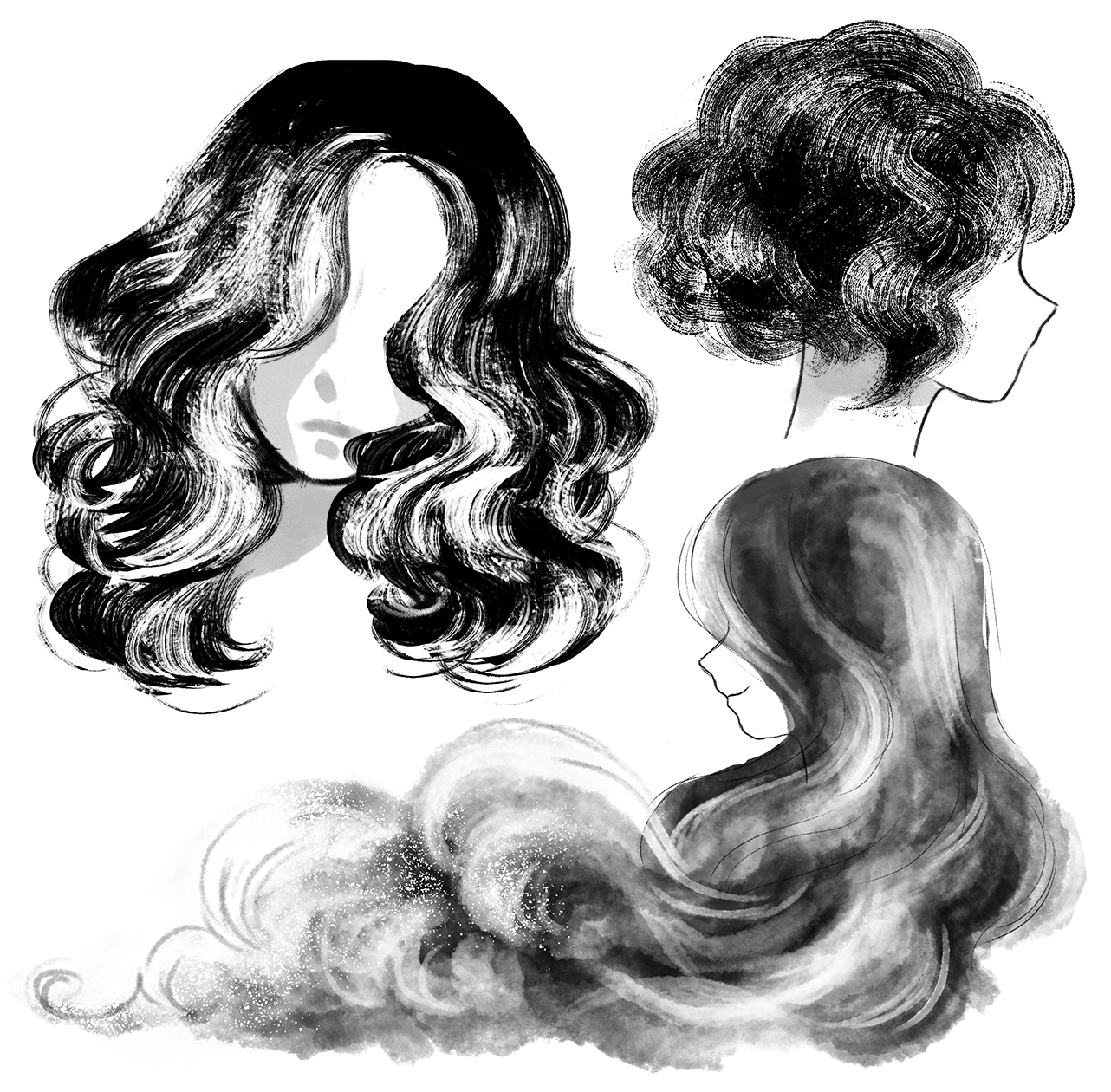
On the other manus, straight hair has serene, at-home, simple and maybe elegant lines.
Explosive —but not besides much, curly hair is voluminous, hard to command and, many times, hard to comb! Fluffy, soft, playful and gorgeous, those are some adjectives we can remember near. Textures save time and add complexity to the shapes.
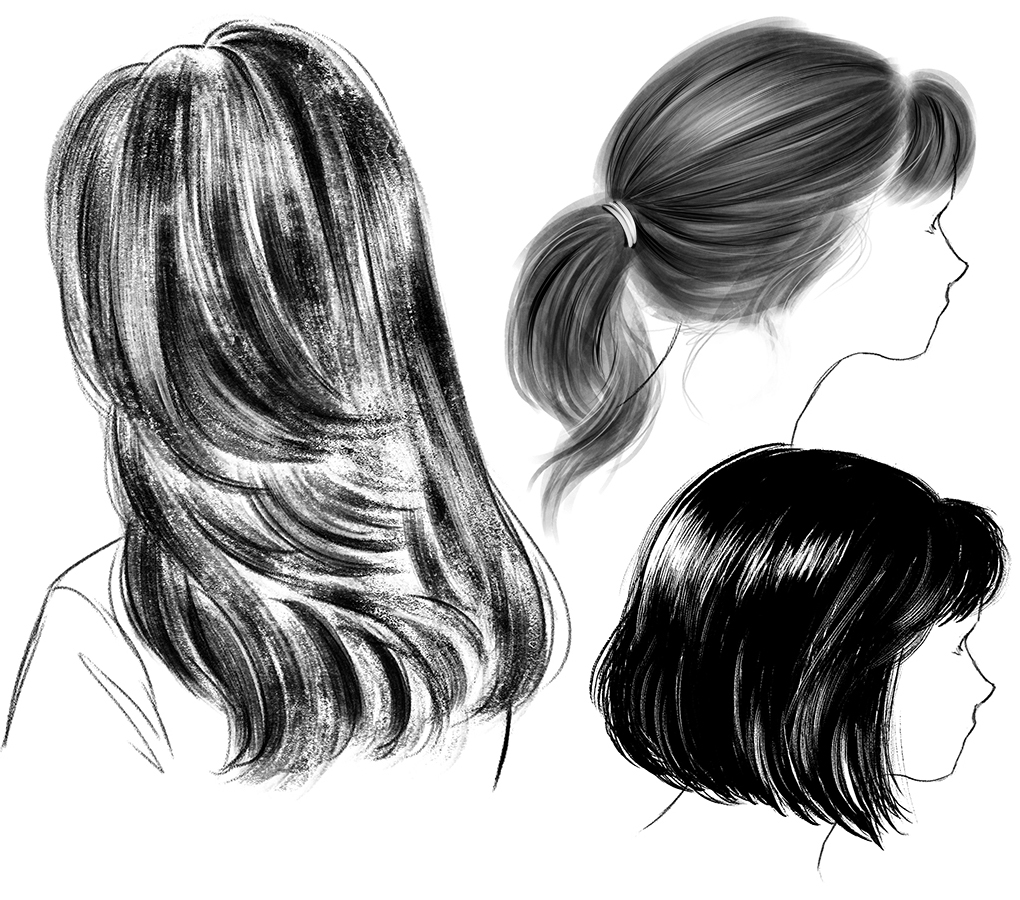
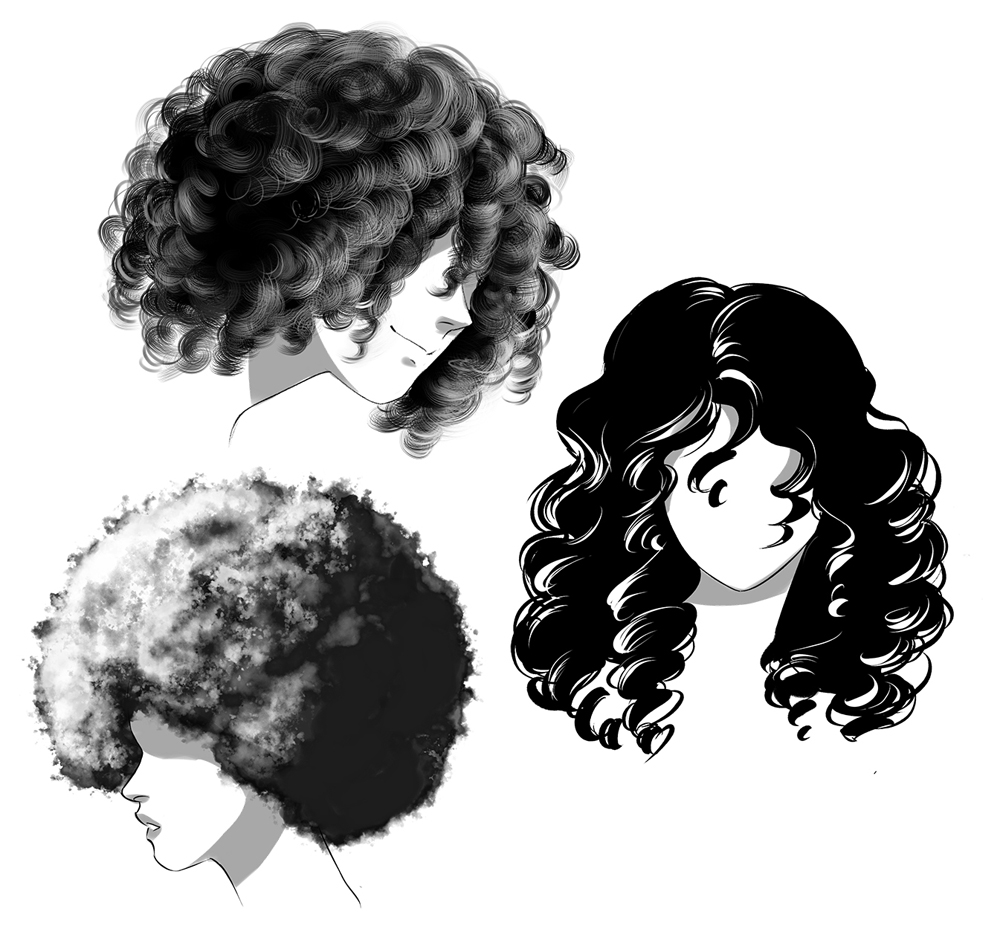
Conclusion:
These are all full general approaches that utilize can use to make hair look like hair. If you want to get further, interruption the rules! In that location is cipher wrong in, for instance, ignoring gravity, or exaggerating the volume of hairstyles, or creating hair made of burn down! There are and so many possibilities nosotros can play with to create new things. I hope this article has been helpful for you lot. If you wish to encounter some of my works, delight have a look at my social networks and my portfolio:
https://www.instagram.com/eri_duh/
https://twitter.com/eri_duh
https://www.artstation.com/eridey
Thank you very much for reading!
Source: https://www.clipstudio.net/how-to-draw/archives/159719
Posted by: oneallaremas.blogspot.com


0 Response to "How To Draw Long Flowing Hair"
Post a Comment